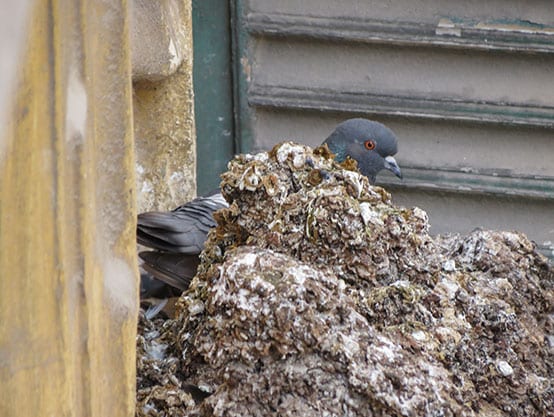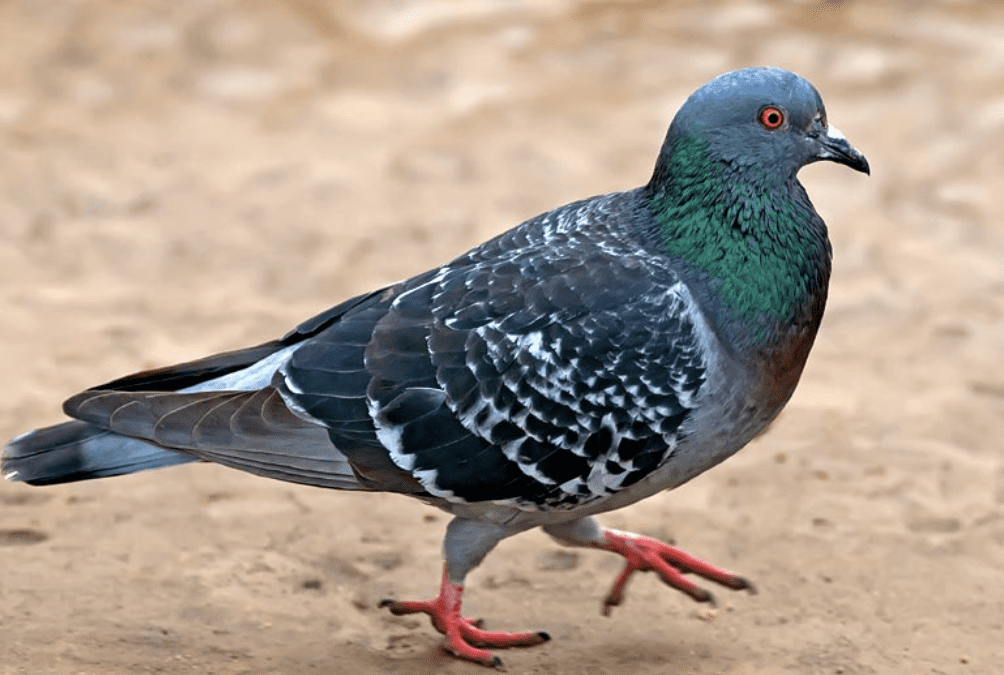
Homing Pigeons Get Their Bearings From Their Beaks
It has long been recognized that birds possess the ability to use the Earth’s magnetic field for their navigation, although just how this is done has not yet been clarified. However, the discovery of iron-containing structures in the beaks of homing pigeons in a new study1 by Gerta Fleissner and her colleagues at the University of Frankfurt offers a promising insight into this complex topic. The article will be published online mid-March in Springer’s journal Naturwissenschaften.
In histological and physicochemical examinations in collaboration with HASYLAB, the synchrotron laboratories based in Hamburg, Germany, iron-containing subcellular particles of maghemite and magnetite were found in sensory dendrites² of the skin lining the upper beak of homing pigeons. This research project found that these dendrites are arranged in a complex three-dimensional pattern with different spatial orientation designed to analyze the three components of the magnetic field vector separately. They react to the Earth’s external magnetic field in a very sensitive and specific manner, thus acting as a three-axis magnetometer.

The study suggests that the birds sense the magnetic field independent of their motion and posture and thus can identify their geographical position.
The researchers further believe that this ability is not unique to homing pigeons as they expect that the ‘pigeon-type receptor system … might turn out to be a universal feature of all birds’. Equally, this concept might not only exclusively apply to birds, since it has been shown that many animals display behavior that is modified or controlled by the Earth’s magnetic field.
The meaning of these minute iron oxide crystals goes farther than their amazing ability to help pigeons home. Research into how they work has caught the interest of nanotechnologists concerning their potential application for accurate drug targeting and even as a data storage device. The main problem, however, lies in their synthetic production. According to Gerta Fleissner and her colleagues, “Even though birds have been producing these particles for millions of years, the main problem for scientists who want to find benefits from their use will be the technical production of these particles”.
1. Fleissner et al (2007). A novel concept of Fe-mineral-based magnetoreception: histological and physicochemical data from the upper beak of homing pigeons. Naturwissenschaften (DOI 10.1007/s00114-007-0236-0).
2. A dendrite is a branched extension a nerve cell (neuron)
Pigeon Patrol Products & Services is the leading manufacturer and distributor of bird deterrent (control) products in Canada. Pigeon Patrol products have solved pest bird problems in industrial, commercial, and residential settings since 2000, by using safe and humane bird deterrents with only bird and animal friendly solutions. At Pigeon Patrol, we manufacture and offer a variety of bird deterrents, ranging from Ultra-flex Bird Spikes with UV protection, Bird Netting, 4-S Bird Gel and the best Ultrasonic and audible sound devices on the market today.
Voted Best Canadian wholesaler for Bird Deterrent products ten years in a row.
Contact us at 1- 877– 4– NO-BIRD, (604) 585-9279 or visit our website at www.pigeonpatrol.ca
Pigeon/Pigeon Patrol / Pigeons Roosting / Vancouver Pigeon Control /Bird Spikes / Bird Control / Bird Deterrent / Pigeon Deterrent? Surrey Pigeon Control / Pest /Seagull deterrent / Vancouver Pigeon Blog / Birds Inside Home / Pigeons in the cities / Ice Pigeons/ What to do about pigeons/ sparrows , Damage by Sparrows, How To Keep Raccoons Away, Why Are Raccoons Considered Pests/ De-fence / Pigeon Nesting/ Bird Droppings / Pigeon Dropping/ woodpecker control/ Professional Bird Control Company/ Keep The Birds Away/ Birds/rats/ seagull/pigeon/woodpecker/ dove/sparrow/pidgeon control/pidgeon problem/ pidgeon control/flying rats/ pigeon Problems/ bird netting/bird gel/bird spray/bird nails/ bird guard









 You will usually see a pigeon poop when it is perching on a ledge or branch, or when it is foraging…but not when it is flying overhead.
You will usually see a pigeon poop when it is perching on a ledge or branch, or when it is foraging…but not when it is flying overhead.



